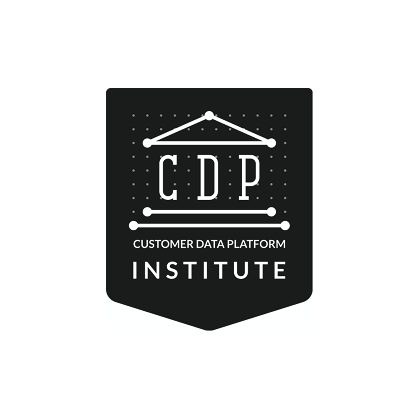Data is the fuel in today’s marketing. But not all data is created equal.
Consumers are increasingly using multiple devices and touchpoints to complete a task, generating a lot of disparate data on the way. Legacy systems like CRMs are then unable to handle and sync this information in real time to one central location that reflects the full spectrum of an individual’s cross-channel activities.
A single view of the customer is the solution to this problem. It gathers all of the various components of a user’s data into one cohesive, up-to-date profile that any part of the business can access and activate.
And when it comes to personalising the user experience and making informed marketing decisions, there’s no better source of information than a single consumer view.
But what is a single customer view, how do you create one, and what are the benefits (and risks) of doing so? We tell all in this blog.
What Is A Single Customer View?
A single customer view, also known as a 360 degree customer view, is a comprehensive aggregation of all data associated with the customer. This data might contain a user’s basic contact information, buying history, as well as information on the interactions they had with other business touch-points (such as customer service or point-of-sale) throughout their customer journey.
Single customer views are valuable because they give marketers a clear picture of the customer, enabling more accurate segmentation and personalisation – ultimately resulting in more successful marketing campaigns.
However, this is easier said than done. Customer data comes from a variety of sources, including your website, in-store sales transactions, marketing tools, social media platforms, and customer support interactions. After you’ve gathered this information, it must be cleaned, combined into a cohesive whole, and then stored in a single location where it can be easily accessed by those who need it.
Because of these needs, Customer Data Platforms (CDPs) are generally used to create single customer views.
Why Create a Single Customer View? 5 Benefits
Single customer views provide an array of benefits for businesses, giving all departments valuable information that can help them improve their operations. For example, CEOs may have more precise data to make decisions, marketers may be able to develop more lucrative campaigns, and customer care agents could handle difficulties faster. Other vital benefits include:
No More Data Silos
The core advantage of creating a single customer view is to manage the problem of siloed or duplicate data, which is usually caused by businesses adding new channels or applications that hold information separately.
User information which is siloed across departments is nearly impossible to share among teams, damaging cohesive marketing efforts and the customer experience. For example, you might distribute several copies of the same, or irrelevant marketing material, or you could even confuse your clients with conflicting offers.
Plus, it results in a lot of duplicate data ending up in the system.
With siloed data, you fail to provide a coherent and seamless experience for your users. A Single Customer View solves this, unifying disparate data sources and identities, and combining them into a comprehensive customer overview that a wide range of departments (and their tools) can readily draw upon to activate.
Omnichannel Personalisation
Personalisation can only be effectively delivered if the data you’re using is up to date and relevant. Your message, offer, or recommendation would be otherwise ineffective (like a discount coupon for a product that was purchased yesterday at full price), with the potential to turn away consumers.
However, with one singular accurate view of each consumer updated in real time, you can confidently target your marketing efforts to each individual based on the correct information you have about them across different touchpoints. By delivering the right message at the right moment in their journey, you can build stronger loyalty and more profitable lifetime value (LTV).
More informed, data-backed marketing
With a deeper understanding of your consumers’ behaviour, you’ll be able to avoid making marketing decisions that are based on assumptions.
Instead, you’ll get a more detailed, quantitative view so you can better identify your most valuable customers. This will allow you to more quickly create and activate Next Best Action (NBA) campaigns such as cross-sell and upsell suggestions, as well as increase customer retention.
More granular targeting
Targeted marketing efforts can be vastly improved with a single customer view, without the need to worry about duplicate or inaccurate data.
In creating a single customer view, you combine data points from multiple different channels and dimensions that would otherwise have sat in different silos. In bringing these together, you open up the opportunity to combine more sets of variables in order to create more sophisticated segments for granular targeting.
For example, in combining purchase history data with data on email interactions, you may be able to identify a segment of customers who were once regular shoppers but have since started to engage less. You could use this opportunity to target them specifically with ‘win back’ campaigns to mitigate against churn.
A reliable foundation for privacy compliance
One of the big challenges of modern marketing – particular in markets like Europe where data privacy laws are at their strictest – is that customers can give and retract consent to use their data at any time, and across a wide variety of channels. So just like their data in general, their consent is sitting in silos.
A single customer view can again come to the rescue here, resolving consent decisions and preferences at an individual level for a clear picture of what the marketer can and can’t activate.
How To Create A Single Customer View In 3 Steps
With a Customer Data Platform (CDP), you can combine data from all of your platforms, touchpoints, and tools to create a single customer view. Through a wide spectrum of inbound and outbound integrations, a CDP can standardise and centralise all of this data so that it may be accessed by the different teams and tools that need to use it. Here’s how it works:
1. Collect data from various tools and sources
Connecting data sources to your CDP allows you to acquire all the data you need for a single customer view. The types of data that comprise a single customer view vary from business to business, and what you gather is determined by the channels and tools you employ as well as existing infrastructure.
Data sources that commonly feed into a single customer view include:
- Databases
- Data lakes and warehouses
- Flat files
- RSS feeds
- APIs
- Javascript
- Web App Pixels
2. Use a CDP to resolve customer identities
All of the customer data collected across multiple touch-points must be combined into a single customer profile through identity resolution. Identity resolution compares unique identifiers like email addresses, login credentials, and IP numbers to build complete customer profiles. This is arguably one of the most complex steps of creating a single customer view – ensure you choose a CDP that can provide its credentials here.
It’s also worth noting again that in creating a single customer view you must also create a single ‘consent’ view – in other words, having consent and marketing preferences reflected in the profile alongside other data points.
Without it, you’ll be unable to reliably understand which data you can and can’t activate, and on which channels – but note that not all CDPs have this ‘baked in’. For more on Consent Orchestration, check out this article.
3. Strategise your SCV
Building a single customer view is a time-consuming and complex process, which is why you need an effective strategy that outlines your desired business objectives. That means knowing exactly what you want to achieve with a single customer view, and how it will assist your business.
It also entails collaborating with multiple business departments, preparing for business-wide changes, and managing a variety of resources, including assets, budgets, and external suppliers.
You must then decide which data sources to value, and choose the right solutions to assist you in gathering, resolving, and analysing your data in order to build comprehensive single customer views that are ready to maximise targeted and segmented marketing efforts.
It’s helpful to first identify which use cases are the most important to you so that your efforts can be focused – a list of the most commonly seen ones can be found here.
Single Customer View Use Cases
At its core, the use case for a single customer view is allowing marketers to provide personalised content and services across their operations.
With access to information about consumer’s intentions, interests, and preferences, businesses with a single customer view will be able to offer more accurate product suggestions, provide relevant offers and discounts, successfully re-engage their consumers across the customer journey, and produce targeted and effective up-and-cross-sell campaigns.
Single Customer View Example
One of the things a single customer view does most effectively is transform prospective customers and lapsed customers into active, or converted, customers through personalisation.
Using SCV data you can quickly identify consumers who fall into those two categories, and then develop marketing strategies to regain their attention and loyalty.
For example, let’s say you have a list of at-risk customers that used to be strong purchasers of your goods or services. The first thing you would do is to use the data collected from your SCV and identify specific segments within that consumer group to target to by separating consumers based on criteria such as the following:
- The time since last order
- Previous purchase frequency and;
- Purchase value.
In the case of Zeotap’s CDP, you can even use pre-set machine-learned models that combine these characteristics for you in the most effective way. This enables you to identify different groups of users who have all stopped buying from you, and gives you an opportunity to personalise your communications with them by sending different campaigns with different approaches.
For example, consumers with high purchase values may need their messaging tailored to their previous expensive purchases, whereas consumers who do not have high purchase values could receive something more generalised.
With that knowledge in your hands, and a personalised approach, you are more likely to re-engage them and move them back into the ‘active customer’ group.
Summary
A single customer view is critical to delivering not only personalised marketing, but doing so in a way that gives you (and your Data Protection Officer) confidence that you’re doing so in compliance with increasingly strict data privacy laws.
To find out more about the advantages of using a CDP to power your SCV strategy, get acquainted with the capabilities found in Zeotap’s CDP.

































